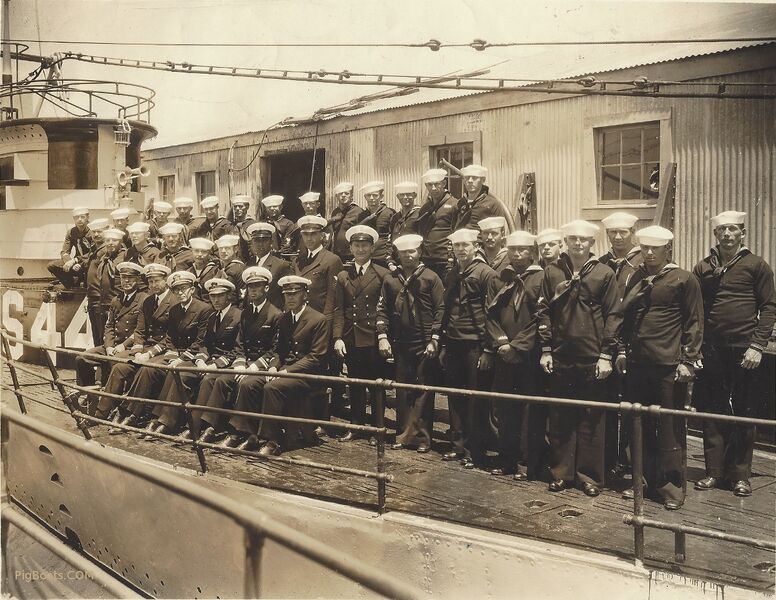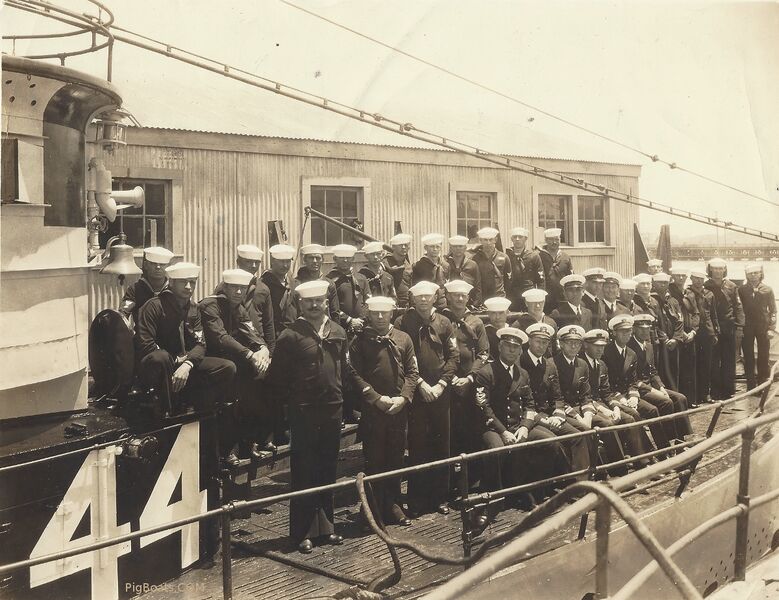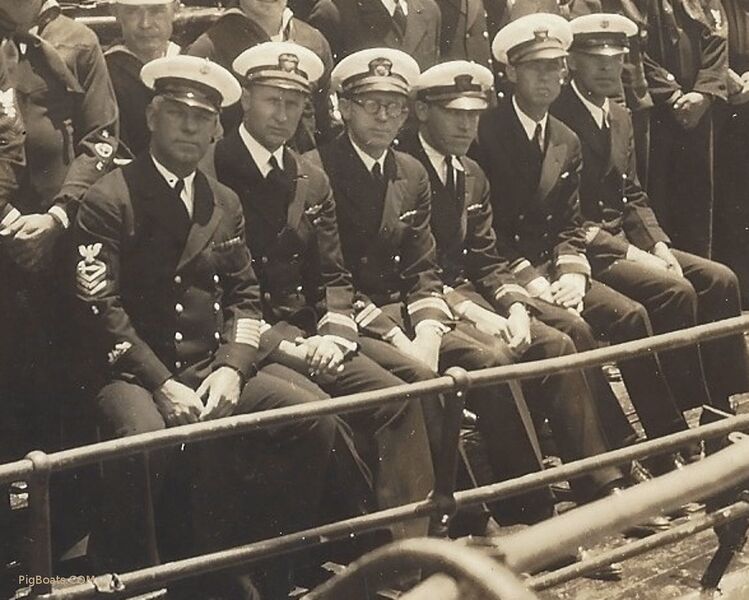S-44: Difference between revisions
Pbcjohnston (talk | contribs) Added photos and captions |
Pbcjohnston (talk | contribs) Added captions |
||
| Line 2: | Line 2: | ||
[[File:S-44 in Boston dry dock-2.jpg|left|500px]] | [[File:S-44 in Boston dry dock-2.jpg|left|500px]] | ||
<div style="text-align: justify;"><span style="color:#00008B">S-44 in drydock at the Charlestown Navy Yard, Boston, MA., | <div style="text-align: justify;"><span style="color:#00008B">S-44 in drydock at the Charlestown Navy Yard, Boston, MA., spring of 1925. The boat was going through a post-commissioning yard availability. In the present day the Charlestown yard has been closed for quite some time, but both of the buildings on the right are still in use. The one at the top is the headquarters and staff spaces for the crew of the USS Constitution, and the larger one is a warehouse for supplies for the sailing frigate. | ||
<small>Photo in the private collection of Ric Hedman.</small> | <small>Photo in the private collection of Ric Hedman.</small> | ||
| Line 9: | Line 9: | ||
[[File:S-44 in Boston dry dock-3.jpg|left|500px]] | [[File:S-44 in Boston dry dock-3.jpg|left|500px]] | ||
<div style="text-align: justify;"><span style="color:#00008B"> | <div style="text-align: justify;"><span style="color:#00008B">Another view of S-44 in drydock at the Charlestown Navy Yard, Boston, spring of 1925. The obelisk in the left background is the Bunker Hill Monument, several blocks away from the yard. | ||
<small>Photo in the private collection of Ric Hedman.</small> | <small>Photo in the private collection of Ric Hedman.</small> | ||
| Line 16: | Line 16: | ||
[[File:S-44 in Boston dry dock-1.jpg|left|500px]] | [[File:S-44 in Boston dry dock-1.jpg|left|500px]] | ||
<div style="text-align: justify;"><span style="color:#00008B"> | <div style="text-align: justify;"><span style="color:#00008B">A close up view of S-44 in drydock in Charlestown following her commissioning, spring 1925. It is routine for Navy ships to go into a yard period shortly after commissioning. This gives the Navy the opportunity to correct any deficiencies that turned up during the boat's trials period before she fully joins the fleet. Behind the drydock caisson in the background are the masts of the USS Constitution. | ||
<small>Photo in the private collection of Ric Hedman.</small> | <small>Photo in the private collection of Ric Hedman.</small> | ||
| Line 23: | Line 23: | ||
[[File:S-44 in Boston dry dock bow repair.jpg|left|500px]] | [[File:S-44 in Boston dry dock bow repair.jpg|left|500px]] | ||
<div style="text-align: justify;"><span style="color:#00008B"> | <div style="text-align: justify;"><span style="color:#00008B">Work being done on the S-44's bow during her post-commissioning yard period at the Charlestown Navy Yard, Boston, in the spring of 1925. Apparently, some sort of deficiency in the hull structure at the lower tip of the bow needed to be corrected. Numerous rivets and outer plating have been removed. A lot of attention is being given to the torpedo tubes muzzle door area. This indicates that testing might have uncovered some sort of interference for the torpedoes as they left the tube. | ||
<small>Photo in the private collection of Ric Hedman.</small> | <small>Photo in the private collection of Ric Hedman.</small> | ||
Revision as of 00:33, 22 August 2023
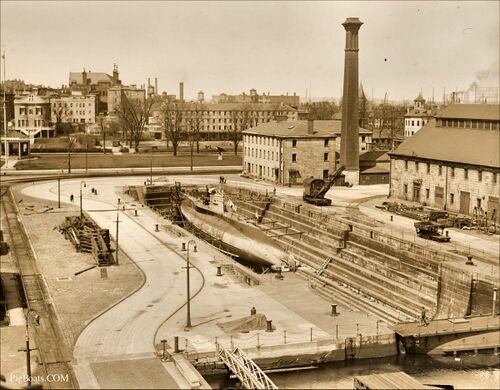
Photo in the private collection of Ric Hedman.
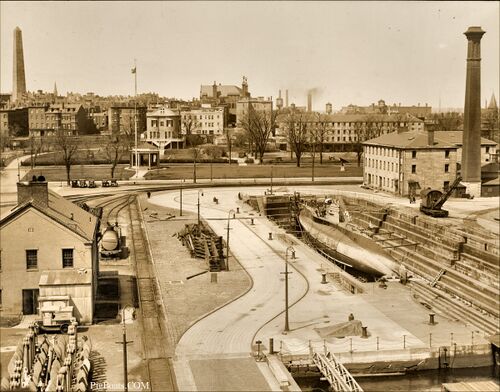
Photo in the private collection of Ric Hedman.
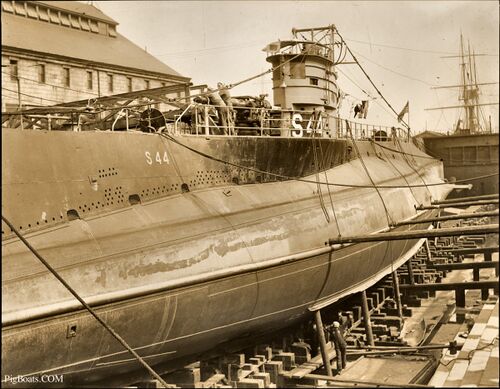
Photo in the private collection of Ric Hedman.
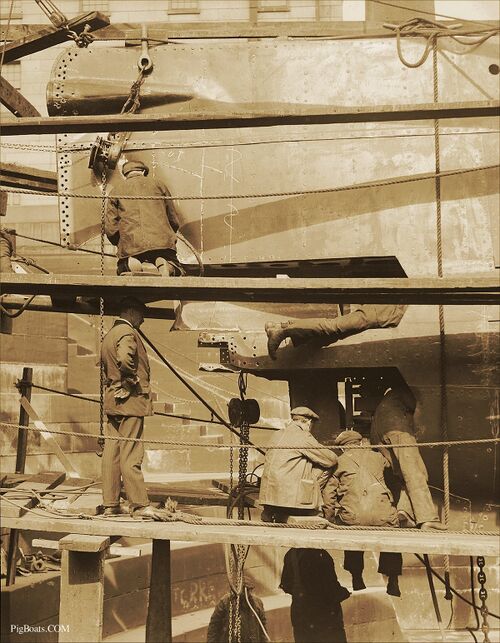
Photo in the private collection of Ric Hedman.
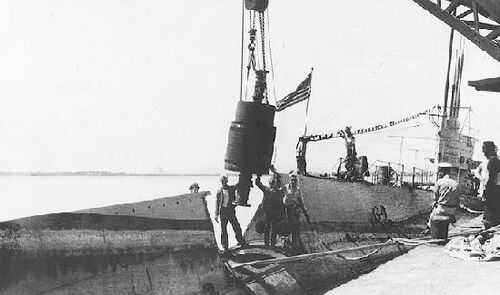
U.S. Navy photo NH 80746 courtesy of the NHHC.
The officer in the front row, third from the left and slightly leaning forward is Lieut. Marvin H. "Red" Grove of Salem, Virginia. He is one of two Lieutenants in this photo the other two are Lieutenant Junior Grade's. This would probably make him the Executive Officer. Very senior Chief Petty Officers sit at either end of the row.
Grove's granddaughter, Lillis Stern, has this to say about the photo; "My grandmother's handwriting on the back says the photo was from 1926 in the Panama Canal. My grandfather was medically discharged in 1931 from Mare Island."
It appears that one of the Stewards Mates, third from the right in the second row, is wearing a borrowed jumper. The sleeves are too long and hang down over his hands and have been folded under. There is another Filipino Steward 5th from the right and a Filipino Chief 8th from the right in the same row.
In the photo on the right, several things become apparent. The man at the very right in the photo and the man standing directly behind the seated Chief on the left are both wearing Gun Pointer First Class patches on their left sleeves. This means they were the men at the pointer and trainer positions at the deck gun during firing. The man behind the Chief is also wearing a Seaman Gunner patch below the Gun Pointer patch.
The chief on the end is a Torpedoman Chief with 5 hashmarks on his left sleeve. This means he has in excess of 20 years continuous duty and possibly as much as 24 years. Since the year is 1926 he could have joined the Navy anywhere between 1902 and 1905. Since the stripes are gold this means he has had no disciplinary actions on his record.
Photos contributed by Lillis Stern, granddaughter of Marvin Grove.
Photos contributed by Lillis Stern, granddaughter of Marvin Grove.

U.S. Navy photo NH 42264 courtesy of the NHHC.
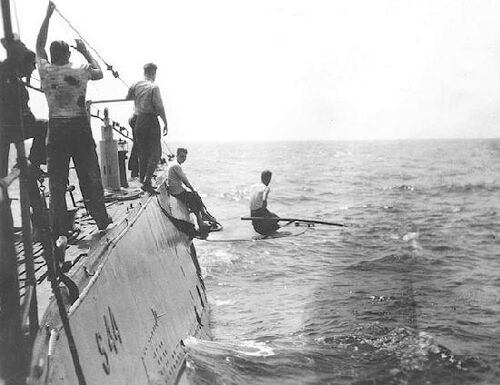
U.S. Navy photo NH 80595 courtesy of the NHHC.

U.S. Navy photo NH 42262 courtesy of the NHHC.
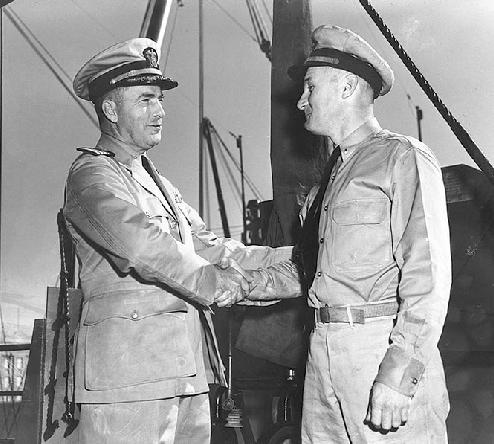
National Archives photo #80-G-12171.

Photo courtesy of the On Eternal Patrol website.
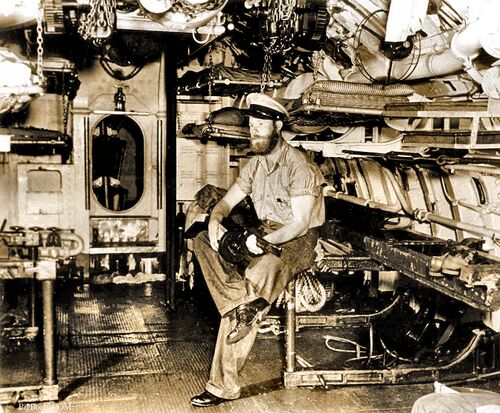
Photo in the private collection of Ric Hedman.

National Archives photo #80-G-33750.
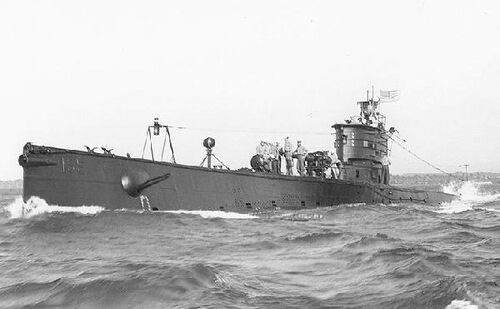
National Archives photo #19-N-41382.
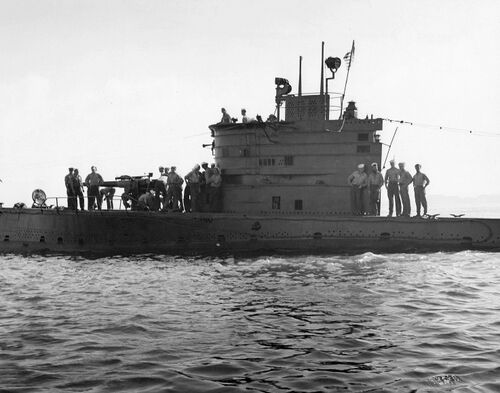
National Archives photo #80-G-36129.
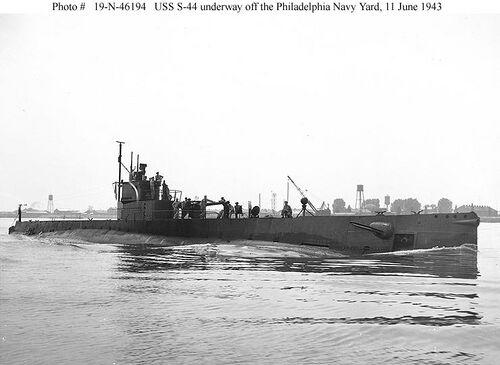
National Archives photo #19-N-46194.

National Archives photo #19-N-46193.
Page created by:
Ric Hedman & David Johnston
1999 - 2023 - PigBoats.COM©
Mountlake Terrace, WA, Norfolk, VA
webmaster at pigboats dot com

